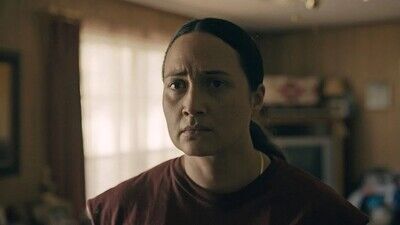Playing it, I wasn’t necessarily allowing Jamie to know a lot of things about herself. It was a moment when things were being stirred up within her. It’s that isolation culture, a little bit of that ranching culture. It’s also one of those things where, I don’t know if you experienced this in a rural sense, but I think if you’re in a rural community that happens to also be in the Bible Belt, you might have a different experience as a queer person.
In 2014, Out Magazine listed Texas as one of the most queer-friendly places to live because there’s such an expanse of land there. The legislation certainly is not friendly, not to women either. Not for hardly anybody, except for one small demographic in this country. But the culture of living in a land that calls the shots, you know, like the whole “nature bats last” saying, you learn to be very reliant on your neighbors and be very live and let live. If you need something from your neighbor, you’re there for them because you’ll need them too.
I think that was kind of the delusion that very much drove the rancher in “Certain Women,” too. Jamie thinks, “This girl (Kristen Stewart) is driving on those roads. I know what those roads are. She’s hungry, she’s tired, I just want to make sure she’s okay.” That’s something very protective about her. That might be the pulse that Quinn picked up on. This protective element in this queer attraction. But, you know, I hope Jamie, at some point in her life, got a little bit more clarity on it and not just go right back into the barn with the horses.
I’m not really sure how it became a common thread in a lot of characters that I play, other than it’s a space that I think is really, really valuable and important to consider and to have these nuanced stories.
I think there’s a perception from the city that the country is a very hostile environment. And that’s not the case, necessarily. There may be a lack of worldliness in some aspects. But there’s a rich tapestry of a whole-ass rainbow in rural places. I particularly like, with Indigenous characters, having conversations around gender fluidity, gender roles, and different worldviews.

